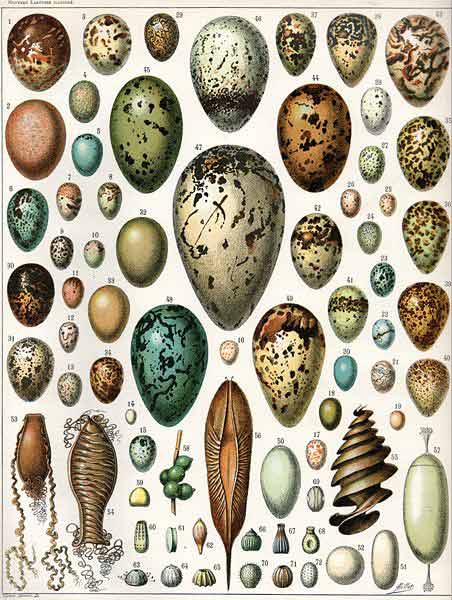
Depending on the species, bird eggs can be any color ranging from chicken's plain white to a robin's blue, streaked, spotted bright, pale, and anything in between. Today, on a Moment of Science, we take a look at some of the reasons this might be the case.
In contrast, birds that nest in cavities or that start incubating as soon as the egg is laid and consequently don't need to hide their eggs, tend to lay unmarked white ones. Given all this, how do scientists explain the fact that robin's eggs are an eye-catching, unmarked blue? Perhaps this enables robins to spot when a parasitic bird tries to add its own eggs to the nest.
For some species, this may pose a greater threat than that of nest robbers.
But first, how do eggs get their color?
As the egg moves down the female's oviduct, the tube that connects the ovary to the outside, it squeezes against glands that produce colored pigments that combine to form every color in the egg shell spectrum. If the egg is stationary at the time that it comes in contact with these glands, it'll be spotted. If the egg is in motion, it will be streaked. |
Information provided for site by the link below https://amos.indiana.edu/library/scripts/eggcolor.html
|
|
|
